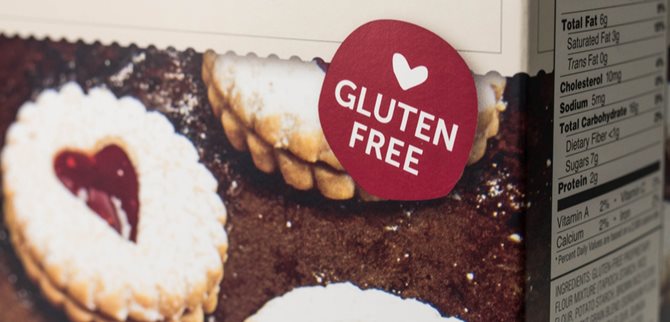Cutting Out Gluten

- Project start date: 12 September 2019
- Project status: Completed
- Project type: Nutrition
- Discipline: Food reviews
- Author/s: Safefood research
Research objective
- To investigate the nutritional contribution of foods containing gluten to the diet of consumers on the island of Ireland.
- To understand consumers’ attitudes and behaviours relating to the gluten-free diet.
- To review the nutritional value of gluten-free snack foods available in retail outlets on the island of Ireland.
Outputs
Research report
- Title: Cutting out gluten
- Date: 29 January 2020
- Summary: The nutrient profile of gluten-free snack foods on the island of Ireland.
- Findings:
The contribution of foods naturally high in gluten to dietary intakes on the island of Ireland- Foods that are naturally high in gluten, such as breads, pasta, breakfast cereals and cakes, contribute approximately one third of energy intake in Ireland and 30% in Northern Ireland.
- Foods that naturally contain gluten contribute 45% of dietary fibre to consumers in Ireland and 38% in Northern Ireland.
- They also contribute significantly to dietary intakes for key nutrients such as protein, fat and carbohydrate.
Who buys gluten-free products
- 22% of the survey participants, or 1 in 5, buy gluten-free products. Of that 22%, 16% follow a gluten-free diet.
-
Of those that follow a gluten-free diet (16% of those who buy gluten-free products), only half had a medical diagnosis of coeliac disease. This means that 92% of those that buy gluten-free products do not have a medical reason to do so.
What consumers think of gluten-free foods
- There is a perception among some consumers that gluten-free products are lower in fat (23%) and sugar (21%), and better sources of fibre (17%).
- 1 in 5 consumers consider a gluten-free diet to be a healthy way to lose weight.
The nutritional profile of a range of gluten-free snack foods
- The range of snack foods includes nut-based products and savoury snacks (e.g., pretzels, raw fruit and nut bars), cereal bakery products (e.g., rice cakes, biscuits and crispbreads) and confectionery (e.g., chocolate bars and granola bars).
- Gluten-free snack foods surveyed were generally classified as high in fat (75%), saturated fat (65%) and sugar (69%).
- One third of the products surveyed were not sources of fibre.
- Nearly 100% of gluten-free snack products surveyed were high energy-dense foods that could potentially contribute to weight gain, with an average calorie content of 445 kcal per 100 g.
- Recommendations:
- Don’t assume that gluten-free products are healthy. Make sure to read the front and back-of-pack nutrition information on product labels to identify options lower in fat and sugar.
- Select snacks that are naturally lower in fat, sugar and salt, and are a better source of fibre, such as fruit and vegetables, rather than heavily processed snack foods.
- If you believe you have a gluten-related disorder you should consult with a medical professional before starting a gluten-free diet. Avoiding gluten before the blood test is done could lead to an inaccurate result.
You can download the report below.




